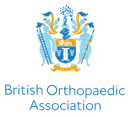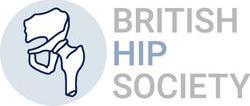Background and Justification
Peri-prosthetic joint infection (PJI) can be devastating for patients and expensive to treat. Definitive treatment pathways require coordinated, multidisciplinary input from specialist infection treatment centres to achieve optimum patient outcomes. Initial management is considered in the relevant BOASt and the purpose of this document is to advise on the definitive management, irrespective of anatomical site.
Inclusion:
All patients with primary or revision arthroplasty with suspected or confirmed PJI.
Summary of Standards
Organisational:
- A robust, well-defined pathway, coordinated by an MDT, should be in place for the timely investigation and management of all patients with suspected or confirmed PJI. Every unit managing PJI must submit data to a national registry to monitor performance against agreed standards.
- The MDT should comprise a core of specialist arthroplasty surgeons, infectious disease physicians or microbiologists, specialist nurses, an MDT coordinator and have administrative time reflected in job plans. Access to plastic surgeons, radiologists, rehabilitation teams, pharmacists, and allied specialties should be available, either locally or through a regional network.
- The outcomes of MDT discussions should be recorded and outcomes audited.
- Patients should have access to advice and early review through a single contact number or e-mail address during treatment for PJI.
- All involved health care professionals should undergo continued medical education in the management of PJI.
- Suspected chronic PJI should have outpatient review and investigation within four weeks. If confirmed PJI, the patient requires urgent referral to the MDT coordinator for discussion at the next available meeting.
Diagnosis:
- Red flags suggesting acute infection (e.g. severe acute pain, systemic illness) require emergency clinical review by the on-call team. The acutely unwell patient should be managed according to the PJI BOASt.
- Mandatory investigations include:
- FBC, U+E, CRP serological analysis (+/- ESR or PV).
- Plain imaging (X-Rays). *
- Tissue sampling:
- If aspiration +/- biopsy is required, this should be undertaken in a clean area, operating theatre or radiology suite using aseptic technique, sterile pots and/or blood culture bottles.
- If a biopsy is performed, five separate surgical specimens should be obtained for microbiological assessment, plus at least two for histological assessment. Each microbiology sample must be taken with clean instruments.
- Samples for microbiology should be labelled urgent for immediate analysis and processed within 24 hours.
- Samples for microbiology should undergo extended culture protocols where initial culture does not identify causative organisms.
- PCR (r16s) analysis should be considered where extended culture does not identify causative organisms.
- There should be a locally agreed protocol to obtain a synovial fluid leucocyte count and neutrophil differential. **
- Histology with a quantitative assessment of neutrophil infiltrates is recommended if a biopsy is performed.
- Antibiotics should not be administered prior to aspiration +/- biopsy except in cases of acute infection in a systemically unwell (septic) patient.
- Culture negative samples suspicious for PJI warrant MDT discussion to consider fungal or mycobacterial cultures, appropriate serology and/or molecular testing.
Management:
- Debridement Antibiotics and Implant Retention (DAIR) is indicated for acute infections in a well-fixed, well-functioning implant. It is contra-indicated in the presence of a sinus, loose implant and infections caused by fungal, multi-drug resistant or atypical organisms, and caution is recommended in immunocompromised patients or those with multiple comorbidities.
- Arthroscopic washout and debridement have no place in the definitive treatment of PJI and should only be performed as a temporising / life-saving measure to reduce the septic load and allow patient optimisation prior to a formal DAIR or revision procedure.
- DAIR should be performed by a surgeon with experience in revision arthroplasty and modular implants must be exchanged if possible.
- Single or two-stage exchange arthroplasty should be discussed at the MDT. Clinical, microbiological, and reconstructive factors should guide decision-making. Single stage revision for infection may be appropriate when pre-operative culture shows a single, antibiotic sensitive organism and where the soft tissue envelope is suitable.
- In cases of previous failed single stage, fungal, atypical, or multi-drug resistant infection, or when there are negative pre- operative cultures, two-stage revision is recommended.
- Antibiotic choice and treatment duration should be determined by the MDT, ID specialists, or microbiologists guided by local, regional and host factors. The antibiotic plan should be discussed with the patient, including potential adverse effects and the need for any monitoring.
*A bone scan is not routinely recommended, however newer nuclear imaging techniques with a strong negative predictive value may be useful in cases of diagnostic uncertainty. CT and MRI may also assist with evaluation.
** Additional synovial markers of infection such as leucocyte esterase may be useful in some cases.
BESS https://www.bess.ac.uk/
BHS https://britishhipsociety.com/
BOFAS https://www.bofas.org.uk/
BASK https://www.baskonline.com/
BSSH https://www.bssh.ac.uk/
|






